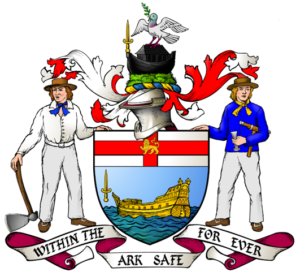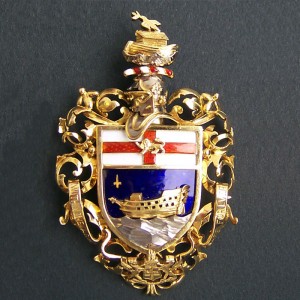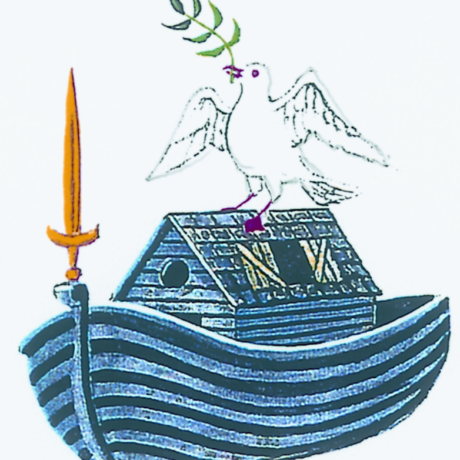The Arms

The Shipwrights' arms have a history of their own, unlike the situation in most other Companies. In the late 16th century a company of "foreign" shipwrights was founded at Redrith (Rotherhithe) on the south bank of the Thames. Since its impetus and membership most probably derived mainly from the Royal Dockyard at Deptford, it was clearly a rival to the Free Shipwrights of London, who were centred on the north bank. By 1578 the "foreign" shipwrights' company was prospering sufficiently to petition for a charter from the Crown, which it received in 1612, and in the interim in 1605 it had been made a grant of arms, which form the basis of the present blazon.
In 1684, after a prolonged legal battle, in which the Free Shipwrights had the support of the City (but not of the Secretary of the Navy, one Mr Samuel Pepys) the foreign shipwrights’ company was suppressed and its charter cancelled. Contrary to heraldic law and usage, the Free Shipwrights promptly adopted, that is to say, stole, the foreign shipwrights’ arms and, from the evidence of the arms engraved on the beadle’s silver staff head commissioned in 1702, used them undifferenced and without authority for over two hundred years. In 1782 the Company was granted its Livery.
It is evident that the Shipwrights' Arms were already a well-known device or "logo" in the shipbuilding industry, and the Company continued to use them undifferenced and illegally until 1920, when King George V ordered that the situation should be regularised in accordance with the rules of heraldry and the matter was referred to the College of Arms.
The differences granted by the College of Arms in that year consisted quite simply of adding the sword from the City of London’s arms to the prow of the Ark on both the shield and the crest in gold ("Or", in heraldic terminology) as can be seen in the Prime Warden's lady's brooch on the right.


In 1982, to commemorate the bicentenary of the grant of Livery, the Company was granted the supporters of two shipwrights, one carrying an axe, the other a caulking hammer which, again, had been in unofficial use for some 200 years.
Finally, in 1995, to complete the process, the Shipwrights were granted a badge, based on the crest depicting Noah’s Ark and the dove of peace, as a more easily reproducible and recognisable emblem and it is the badge which features on the modern livery tie.
The motto "Within the Ark, Safe for Ever", is obviously appropriate and dates back at least to 1782, but carries a double meaning in that Noah's Ark used to be used as a symbol for the Church.
The painting on the right originally hung in the London Tavern before hanging in the Jerusalem Coffee House, the predecessor of the Baltic Exchange, where it remained for many years, it was in 1876 again recorded as hanging in the London Tavern. It later came into the possession of Lt Col A B Cook, JP Master 1891-92, who returned it to the Company in 1894. It now hangs in the Shipwrights' Clerk’s office at Ironmongers’ Hall and at Company dinners in the Hall is mounted behind the Prime Warden’s chair.
Commissioned by the Company 1782, and based on the Shipwrights' Arms, that is the arms of the former Company of Shipwrights of Redriff, but with the notable differences that the hull is of an 18th. century ship of the line with flags flying, and that there are supporters (two shipwrights). The date 1380 appears below the crest: this was apparently the year then thought to be the date of the founding of the Company, though there is evidence to suggest c1190 or c1260 to be more likely.













